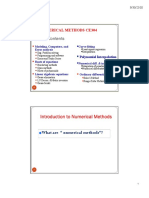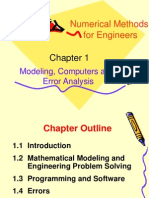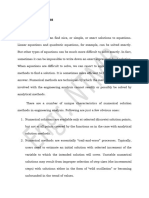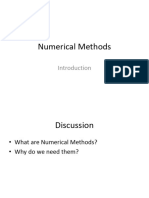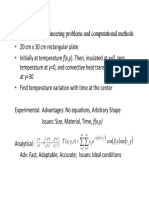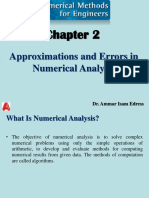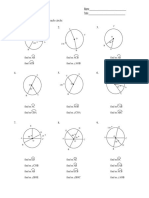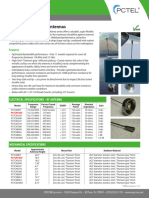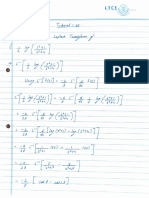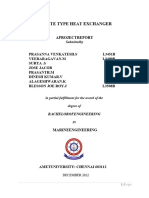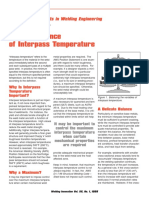0% found this document useful (0 votes)
19 views3 pagesFME7 Topic 5 Introduction To Numerical Methods
The document discusses numerical methods for solving differential equations that cannot be analytically resolved. It defines numerical methods as algorithms for obtaining numerical solutions and outlines their necessity when analytical solutions are impractical. Additionally, it explains different types of errors, including absolute, relative, and percentage errors, and provides problems for practical application of these concepts.
Uploaded by
llabresrenrenz08Copyright
© © All Rights Reserved
We take content rights seriously. If you suspect this is your content, claim it here.
Available Formats
Download as PDF, TXT or read online on Scribd
0% found this document useful (0 votes)
19 views3 pagesFME7 Topic 5 Introduction To Numerical Methods
The document discusses numerical methods for solving differential equations that cannot be analytically resolved. It defines numerical methods as algorithms for obtaining numerical solutions and outlines their necessity when analytical solutions are impractical. Additionally, it explains different types of errors, including absolute, relative, and percentage errors, and provides problems for practical application of these concepts.
Uploaded by
llabresrenrenz08Copyright
© © All Rights Reserved
We take content rights seriously. If you suspect this is your content, claim it here.
Available Formats
Download as PDF, TXT or read online on Scribd
/ 3




